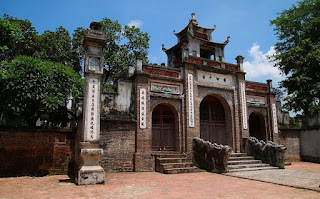Dien Bien Phu is almost 500 km from Hanoi city in the
mountainous area of North West. It is situated in Muong Thanh plains and
surrounded by high mountains. Dien Bien Phu was once the location of the
battlefield where historical combats between the Vietnamese People’s Army and
the French Colonialists Expeditionary Corps took place.
The valley of Dien Bien Phu is 18 km long and 6-8 km wide.
In November 1953, French paratroopers occupied the valley and built 49 strongholds
in three sub-sections.
Hill A1: This
stronghold is one of the most significant one valley controlling the whole
battle of Dien Bien Phu. The hill lies on the direction of North West – South East
with 2 peaks around 490 m high. On the night of 6 May 1954, Vietnamese soldiers
won this decisive battle.
Muong Thanh Airfield:
It was the stronghold 206 and central airport of Dien Bien Phu. Nowadays it is
Dien Bien airport that is in the system of the Vietnam Civil Aviation.
The command bunker of
De Castries: Commander De Castries worked and live inside the bunker that
is 20m long and 8m wide surrounded by dense wire bars and 4 tanks. He was
arrested here by a Vietnamese commander at 17h30 on 7 May 1954 and mark the end
of the fierce fighting.
Other Vestiges:
Him Lam hill is situated on the North West of the valley where Vietnamese
troops fought the first battle on 13 March 1954. Doc Lap Hill was liberated by Vietnamese
Army on 15 March 1954. Hills C, D, and E are well preserved.
The commanding post
for Vietnamese Army: The post is lied in the native forest at Muong Phang
commune. There was a hut where General Vo Nguyen Giap, commander in chief,
worked and other huts for information and military operation discussion. Nearby
the General Giap’s hut is the observation spot where is over 1000m high and can
control the whole view of Muong Thanh valley.



































































